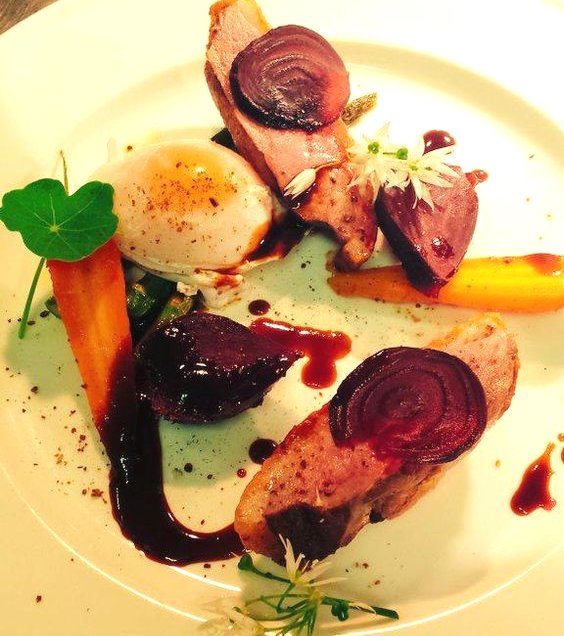Baking and Pastry
- Bake Bread Basics
- Pastries And Pies
- 4.1Basics of pastry making
- 4.2Types of pastry: Shortcrust, Puff & Filo
- 4.3Making Quiche and Tarts
- 4.4Making Sweet Pies (Apple pie)
- 4.5Making Savory pies (Chicken pot pie)
- 4.6Making Choux pastry & Cream puffs
- 4.7Making Éclairs and Profiteroles
- 4.8Specialty Pastry: Mille Feuille
- 4.9Flaky Pie Crusts: Tips and Techniques
- 4.10Creative Pie Decoration Techniques
- Cakes & Cupcakes
- Cookies & Small Bites
- 10.1Cookie Baking Basics
- 10.2Classic Almond Biscotti
- 10.3Making Chocolate Chip Cookies
- 10.4Nutty Walnut Cookies
- 10.5Making Sugar Cookies and Decorating with Royal Icing
- 10.6Making Macarons
- 10.7Making Petit Fours
- 10.8Specialty Cookies: French Madeleines
- 10.9Specialty Cookies: Italian Amaretti
- 10.10Packaging & Presentation of Cookies and Small Bites
Cookies & Small Bites
Basic Principles of Food Presentation

Art of modifying, processing, arranging, or decorating food to enhance its aesthetic appeal.
Food presentation is an essential aspect of baking and cooking that often gets overlooked. However, the way food is presented can significantly impact the overall dining experience. This article will delve into the basic principles of food presentation, focusing on color, balance, and texture.
The Role of Color in Food Presentation
Color plays a crucial role in food presentation. It's the first thing that people notice when they see a dish, and it can significantly impact their perception of the food.
When presenting food, it's essential to use contrasting and complementary colors to make the dish visually appealing. For example, a chocolate cookie might be garnished with a dusting of powdered sugar to create a contrast, or a red velvet cupcake might be topped with green mint leaves for a complementary color scheme.
Achieving Balance in Food Presentation
Balance is another critical aspect of food presentation. A well-balanced dish not only looks more appealing but also ensures that the flavors and textures of the food are well-distributed.
Visual balance can be achieved by considering the size, shape, and placement of the food items on the plate. For instance, a large cookie might be balanced with a small scoop of ice cream, or a tall stack of cookies might be balanced with a low, wide dish of dipping sauce.
Mixing Textures for Visual Interest
Texture is another element that can add visual interest to a dish. By mixing different textures, you can create a more engaging and enjoyable eating experience.
For example, a smooth, creamy frosting might be contrasted with a crunchy cookie, or a soft, chewy brownie might be paired with a crisp, crumbly topping.
In conclusion, the principles of color, balance, and texture are fundamental to creating visually appealing and delicious baked goods. By understanding and applying these principles, you can elevate your baking and cooking skills to a whole new level.